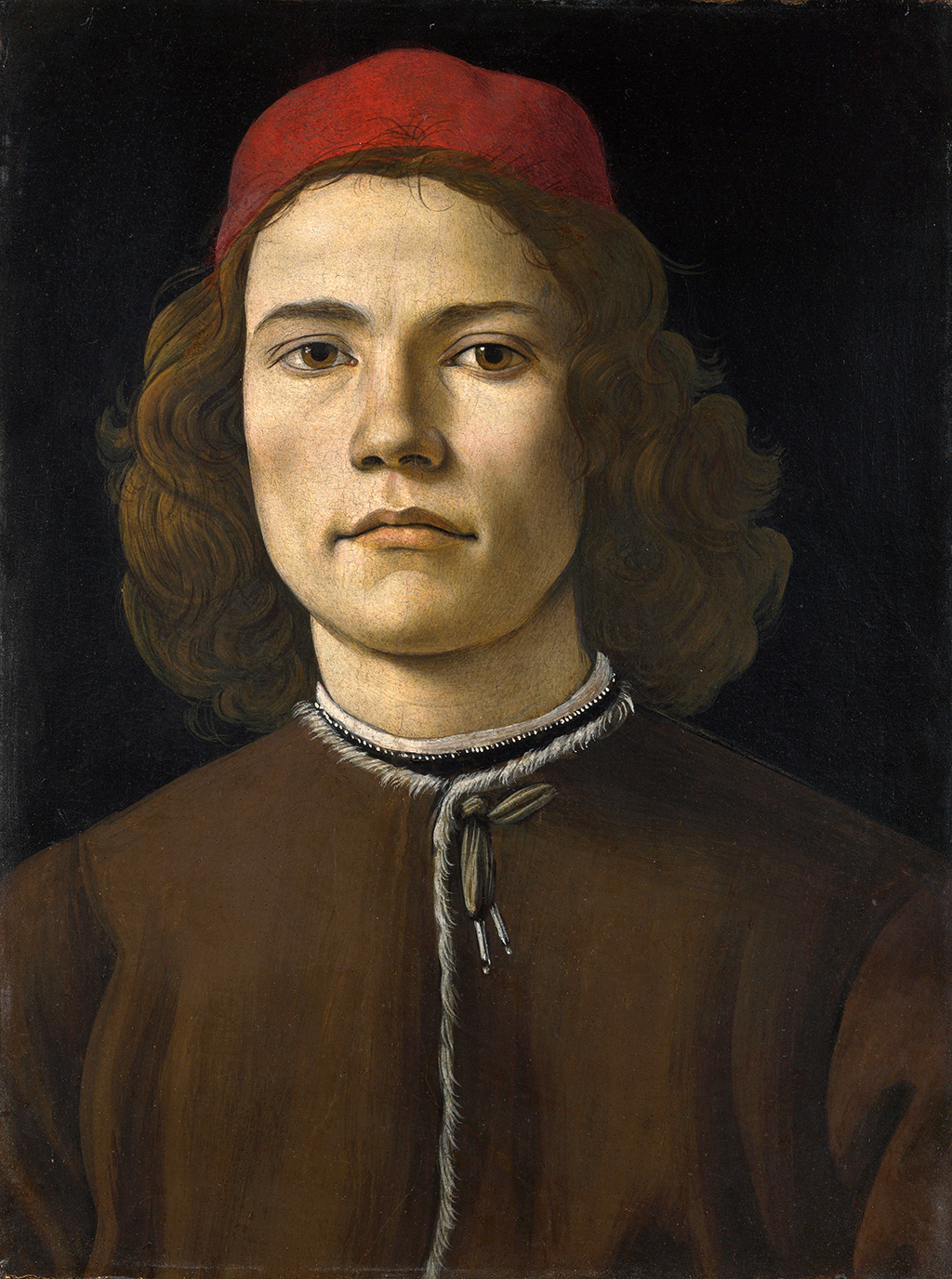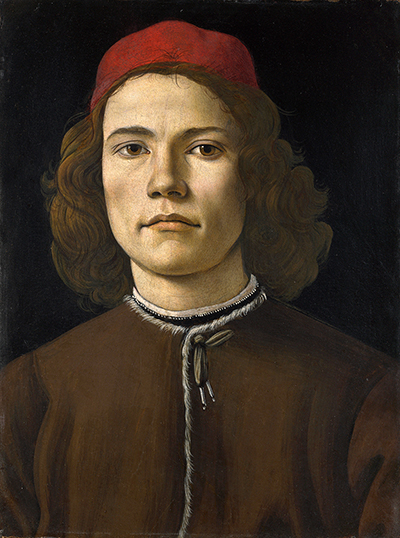Here we see a portrait of a young man from Florence who is captured directly face-on, which was a relatively rare format for Sandro Botticelli. A similar looking model would appear again at an alternative angle in this Portrait of a Young Man.
The model has been carefully chosen, with handsome features including a strong jawline and prominent lips and eyes. He sits patiently, looking directly at us. The young man sports a bright red cap which allows his bushy brown hair to hang down over his ears. He also wears a brown tunic with white embroidery, though this is placed on a black background which reduces its impact. Typically Botticelli would use very neutral backgrounds for his traditional portraits in order to allow the facial features and clothing to dominate one's eye and provide clear structure within the painting. In full length portraits would differ in that regard, where many figures would be placed together in front of highly complex backgrounds which produced a very different atmosphere. This painting is dated at circa 1483, which would place the artist in his late 30s. This tempera on panel piece can be found at the National Gallery, London and measures 37.5 cm in height and 28.3 cm in width, following the standard aspect ratio for this genre.
Some have compared this piece to a work by Antonello da Messina titled Portrait of a Man. Some historians have argued that both actually display influence from Netherlandish art and it would be true to say that both regions took ideas from each other over the course of several centuries. Most famously, of course, is how Italians would take the use of oils from their brothers in the North, having previously used egg tempera instead. Trade would encourage the exchange of artistic ideas between North and South Europe, with many visitors between the two requesting portraits which could then be transported back, allowing other artists to then study the different techniques with their own eyes. Interestingly, full front-on portraits had only ever been used for depictions of Christ within Italian art, but here Botticelli chooses to use the same format for a simple unknown model from a local Florentine family and this change would be taken on by other artists across the country in the coming years.
It is important to recognise that this format of portrait was very rare in the Renaissance up to this point, making this composition highly significant. Botticelli's other portraits are more in line with the standards of the day, with side profile works or those with seated models in three-quarter length view. Botticelli was an artist who brought many new ideas into the Renaissance, and this would be one of the more important aspects of his legacy. He also appeared fairly early on, meaning his influence would also be taken on by other artists within the other stages of this movement. This portrait of a young man has actually been attributed to other artists in its time, with it being linked to other great masters such as Giorgione, Filippino Lippi and even Masaccio, though the current attribution does hold a far greater confidence than the previous suggestions.





